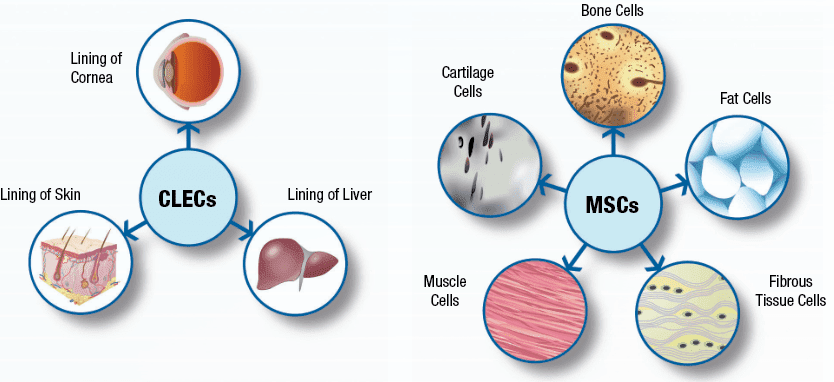
We all know the importance of financial insurance, but what about “biological insurance”?
Knowing more about cord blood and its life-saving benefits will empower you to make informed choices about cord blood banking. Cord blood banking can serve as a form of biological insurance for you and your family should the need of a transplantation ever arise. Read more to find out about umbilical cord stem cells, its benefits, and the criteria to look out for when choosing a family cord blood bank!
What is cord blood, and why is it important?
Cord blood is the blood that remains in the umbilical cord and placenta after the delivery of a baby. It has a high medical value as it is rich in Haematopoietic Stem Cells (HSCs) that have the unique ability to differentiate itself into different types of cells within the body, namely red blood cells, white blood cells and platelets.

Cord blood can be used to treat over 80 diseases¹ such as leukaemia, lymphoma, thalassaemia as well as metabolic and immune disorders, just to name a few. In addition, there are many ongoing clinical trials and studies which investigate the use of cord blood to treat cerebral palsy, autism, Type 1 diabetes, Alzheimer’s disease, spinal cord injury and many more². Clinical trials are one of the key driving forces in medical breakthroughs and are important in advancing new treatments for diseases, some of which have no known cure.
More than just cord blood – a brief introduction to cord lining
Apart from cord blood, parents may also opt to store their child’s cord lining as well. The cord lining is a sheet-like membrane which forms the outermost layer of the umbilical cord and is also a rich source of Mesenchymal Stem Cells (MSCs) and Cord Lining Epithelial Cells (CLECs). These two types of cells are the ‘muscle-forming’ and ‘skin-forming’ building blocks in the human body which have shown great potential in aiding the repair of injured tissues and organs.

Why are parents considering to store their child’s cord blood stem cells?
“1 in 3 people³ will benefit from regenerative medicine therapy.”
1. Perfect match for your child
Your child’s cord blood is a guaranteed match for autologous transplants (where the donor and recipient are the same individual). By storing your child’s cord blood, he/she will have a readily available supply of HSCs should the need of a transplantation in a time-critical situation ever arise.
2. Lower chance of Graft vs Host Disease
One advantage of using cord blood stem cells over other sources of stem cells (e.g. bone marrow) is that it minimises the risk of Graft vs Host Disease (GvHD) for autologous transplants as compared to unrelated donor transplants. Graft vs Host Disease is a condition where the transplanted cells (the graft) attacks the patient’s own tissue and organs (the host).
3. Protection for your family
Apart from being a perfect match for your child, cord blood can also be used by family members. Unlike bone marrow which requires a perfect match between donor and patient, the probability of finding a match among family members using cord blood stem cells is higher. In addition, the chances of finding a suitable match within the family increases with the storage of every additional child’s cord blood⁴.
How is cord blood collected?
Not to worry, the collection of your child’s cord blood is painless, harmless and risk-free for both mother and child. Immediately after the delivery of your baby, your baby’s umbilical cord will be clamped and cut, and your child will be moved to the birthing area. The doctor then collects the umbilical cord blood by inserting a needle into the umbilical vein so as to transfer the cord blood into a blood bag. The cord blood unit is then delivered to your chosen family cord blood bank’s laboratory to be checked and processed before it gets cryogenically preserved in liquid nitrogen tanks.
Criteria to look out for when choosing a family cord blood bank:
Given the vast potential of cord blood, choosing the right family cord blood bank is crucial –here’s a list of criteria to help you make an informed decision for your family.
1. Long-standing establishment
Long-standing establishments are testament to the stability and credibility of a family cord blood bank. This helps to provide parents with the assurance that their child’s precious and life-saving stem cells are stored with a trusted and reliable partner who will be with them for the long haul.
2. International accreditations
Accreditations ensure that the family cord blood bank adheres to the highest quality standards. There are two independent agencies that govern quality systems in transfusion medicine, cellular therapy and cord blood banks around the world – AABB (formerly known as the American Association of Blood Banks) and the Foundation for the Accreditation of Cellular Therapy (FACT). Choosing a family cord blood bank that has obtained international accreditations from AABB and FACT gives parents the assurance that the family cord blood bank adheres to international standards. This also ensures that the family cord blood bank is held accountable to ensuring the quality in how your child’s cord blood is collected, processed and stored.
3. Transplant track record
A transplant track record details out successful transplant releases of cord blood units from the family cord blood bank, and is an important indicator of its reliability. Having a successful transplant track record assures parents that the cord blood stem cells stored under the family cord blood bank’s care is in accordance with the highest and strictest standards and will remain viable for transplantation⁵.
4. Fully-owned processing and storage facility
Having full ownership of its processing and storage facilities ensures that the family cord blood bank has direct control over its critical services, quality, licensing and accreditations. This also means that the family cord blood bank is fully liable for the proper processing, storage and management of your child’s cord blood and cord lining, and can access them immediately in case of an emergency. In that regard, it’s important to choose a family cord blood bank that has a proven transplant track record as well as a longstanding experience in laboratory management expertise.
5. Additional service offerings
Do check if the family cord blood bank offers more services such as storing of the umbilical cord lining. The storage of the umbilical cord lining which contains two additional types of cells – Mesenchymal Stem Cells (MSCs) and Cord Lining Epithelial Cells (CLECs) – increases the family’s medical options and provides total protection for the family. Cordlife is 1 of 4 family cord blood banks worldwide and the only family cord blood bank in Singapore to adopt the patented CellOptimaTM technology for the processing and storage of CLECs present within the umbilical cord lining.
6. Financial stability
Due to life’s unpredictability and uncertainty, you never know when you might need to use your child’s cord blood. As cord blood stem cells are life-saving in nature, it’s important to choose a family cord blood bank that has a secure, transparent and sustainable financial status to ensure that the family cord blood bank will be there with you for the long haul. As such, public-listed companies offer the reassurance that the family cord blood bank is financially stable, and able to meet your needs in the future.
To find out more about cord blood banking, make your way down to Cordlife’s booth (D01) at the SuperMom Fair from 30 August – 1 September 2019 at Singapore Expo Hall 5!
References:
1. For the full list of treatable diseases and references, please refer to https://www.cordlife.com/sg/treatable-diseases
2. Diseases and Disorders that have been in Clinical Trials with Cord Blood or Cord Tissue Cells page. Parent’s Guide to Cord Blood Foundation website. https://parentsguidecordblood.org/en/trials. Accessed August 16, 2019.
3. Harris DT. Cord blood stem cells: a review of potential neurological applications. Stem cell reviews. 2008; 4:269-274.
4. Beatty PG, Boucher KM, Mori M, et al. Probability of Finding HLA-mismatched Related or Unrelated Marrow or Cord Blood Donors. Human Immunology. 2000; 61:834-840.
5. How to choose a private cord blood bank page. Babycenter website. https://www.babycenter.com/0_how-to-choose-a-private-cord-blood-bank_1354934.bc Accessed August 16, 2019.



